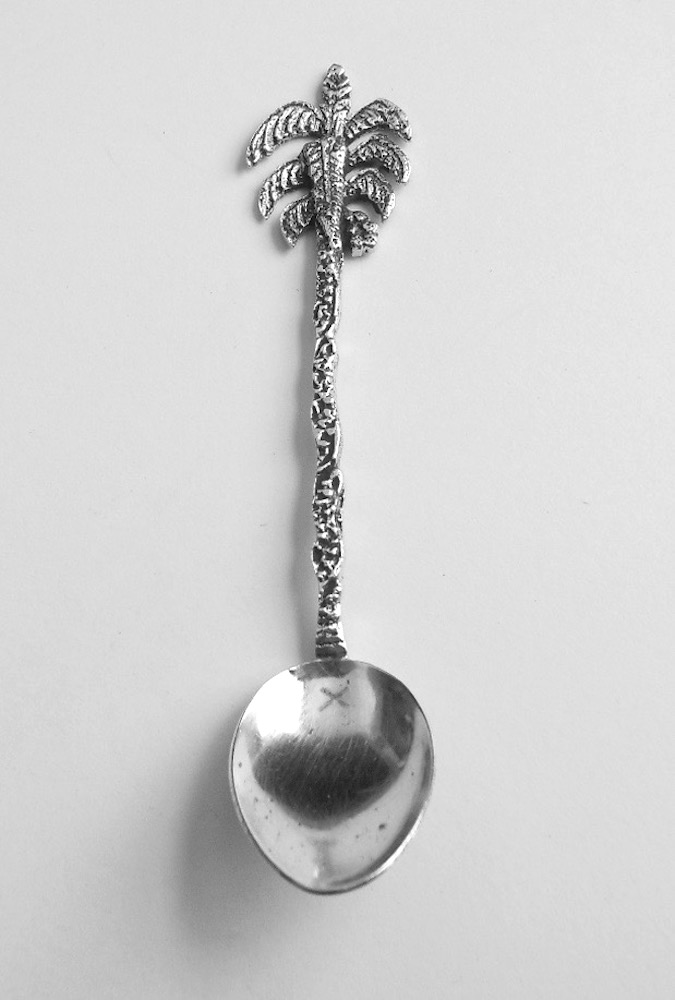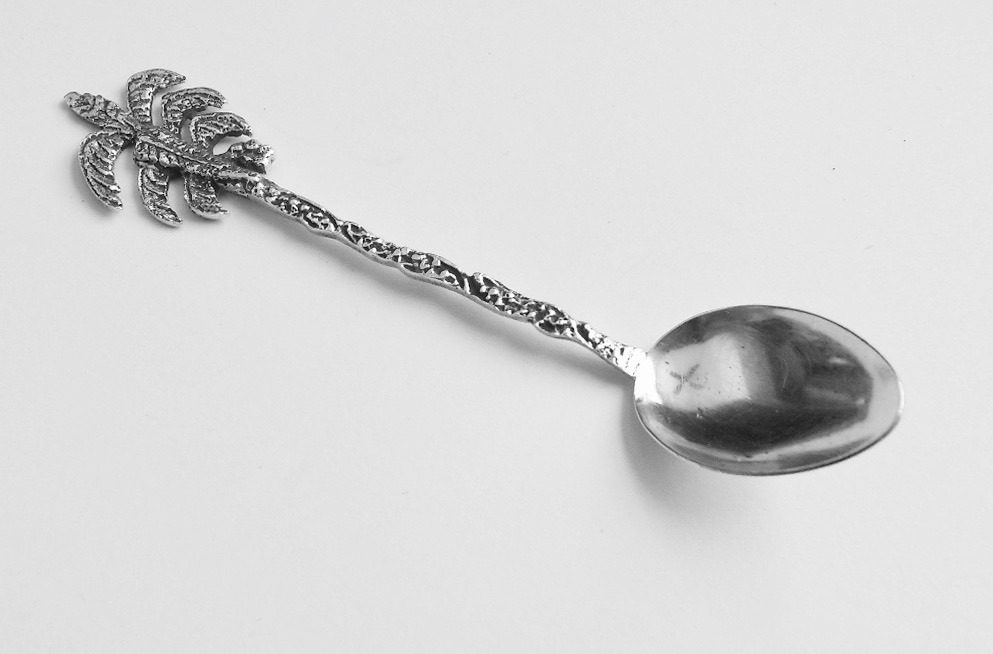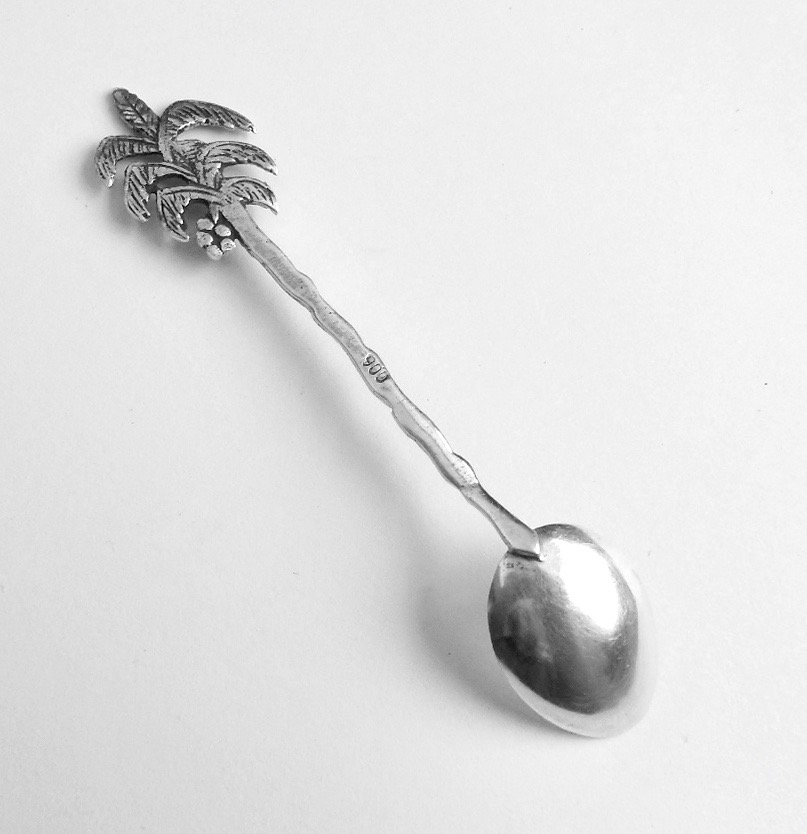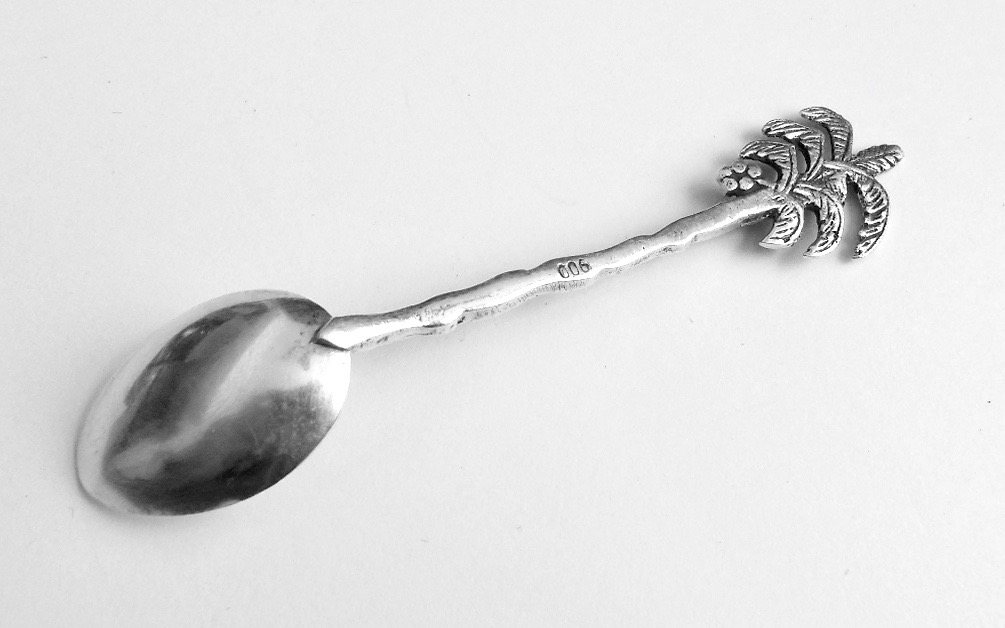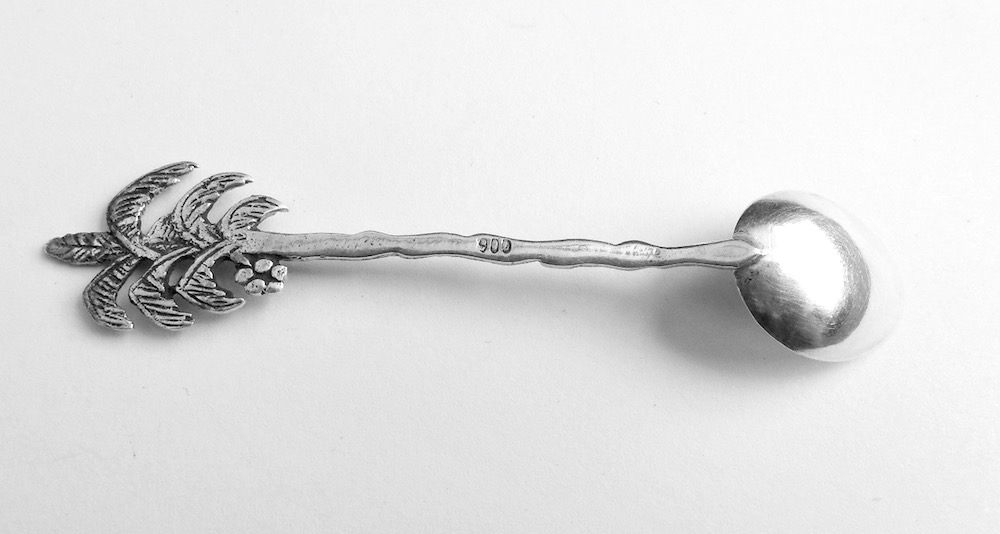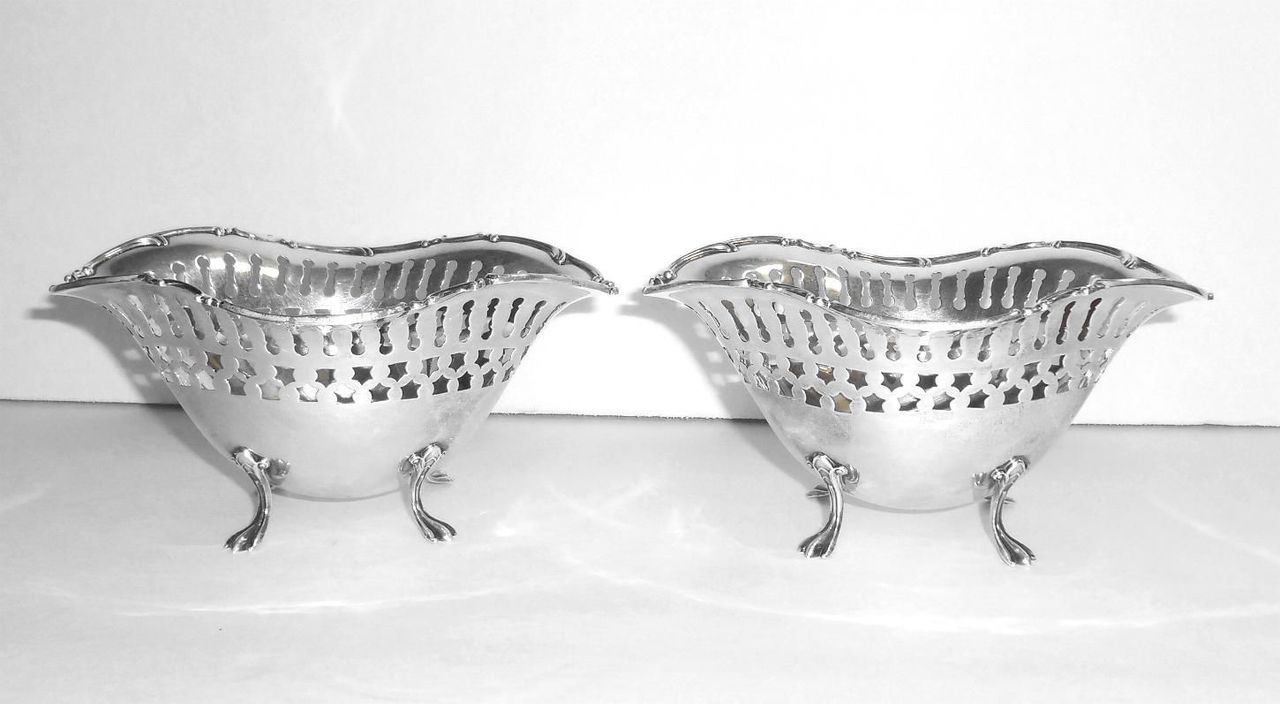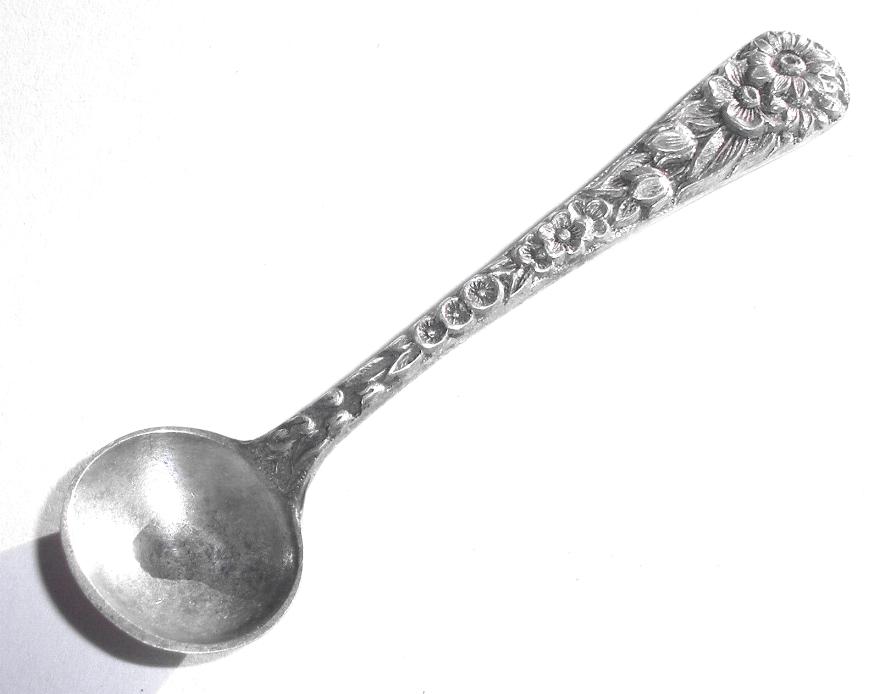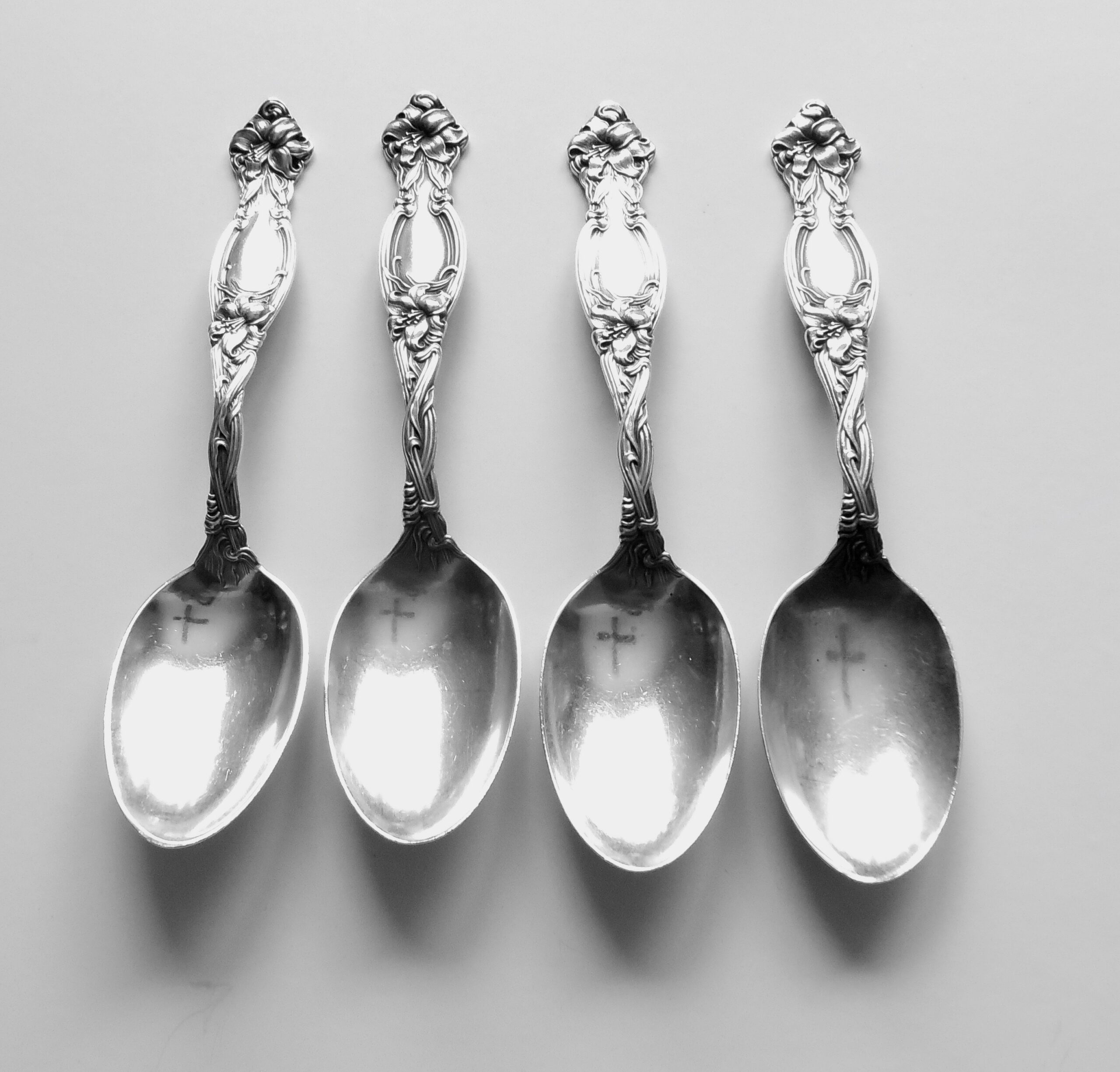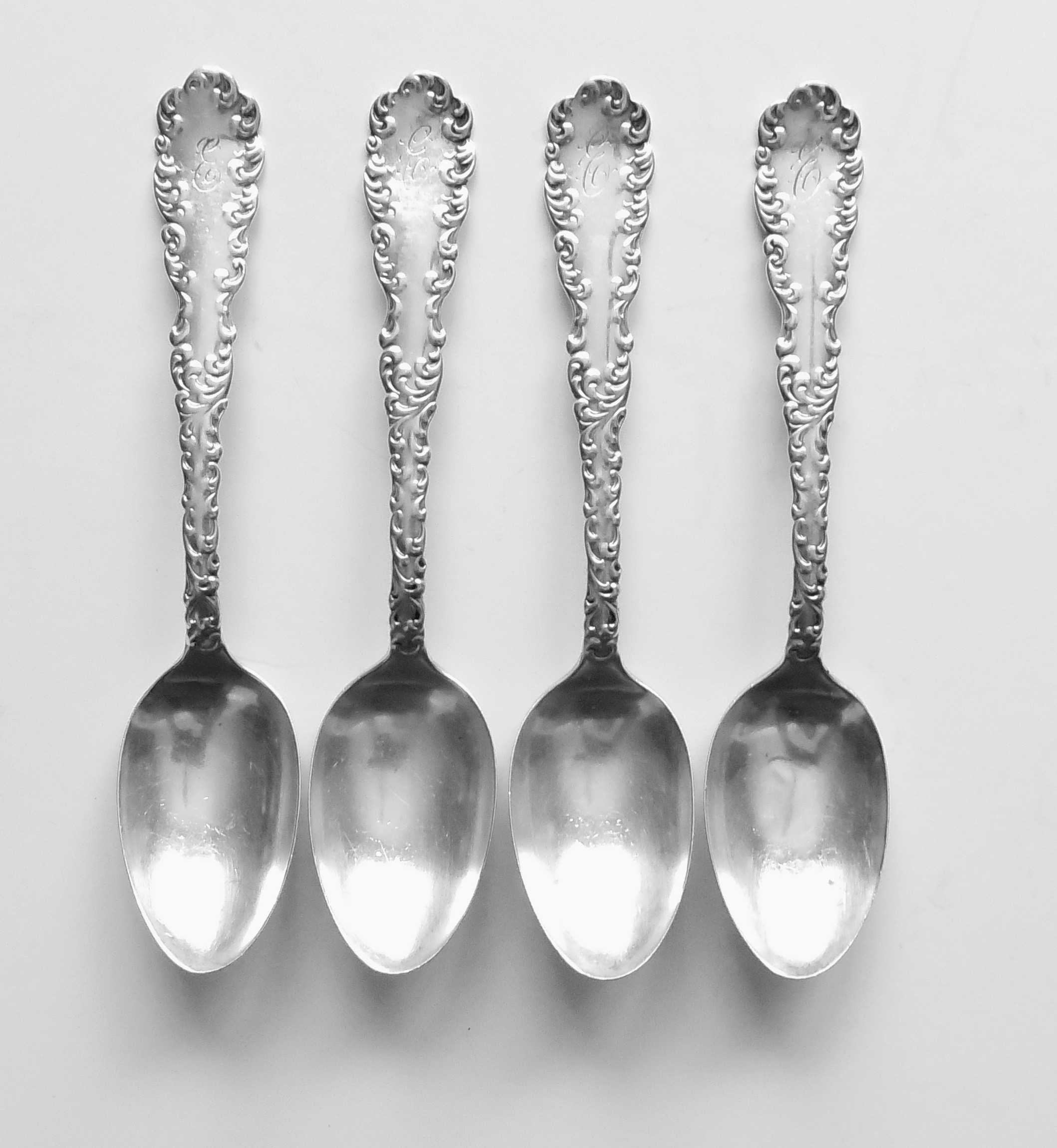Description
Vintage 900 Silver Palm Tree Figural Salt Cellar Spoon
About Antique and Vintage Salt Cellars: (www.collectorsweekly/kitchen/salt-cellars)
In recipe books, the phrase “a pinch of salt” is an instruction to add a scant amount of sodium chloride to a dish in order to brighten its flavors, be they savory or sweet. But throughout most of human history, pinching a bit of salt between the thumb and forefinger, and then letting the captured crystals fall, was the only way to season whatever you were about to eat—salt shakers are a Victorian invention.
Pre-shaker salt containers, known as salt cellars or simply “salts,” were open on top and often paired with small spoons, lest one’s grubby fingers contaminated the salt that remained within. Early examples, sometimes called trencher salts, had flat bottoms, and go back at least as far as the ancient Greeks. By the 17th century, though, salt cellars resembled tiny cauldrons resting on a trio of feet. Often intricately decorated and made of sterling silver, pewter, and other metals, these salt cellars reflected the relatively high cost of salt, which did not begin to become the common commodity we think of today until the 18th century.
Because salt is a corrosive mineral, older salt cellars are often marked by black splotches or spots. From the late 19th century on, glass liners were added to salt cellars to protect their metal bases from the destructive seasoning. For the same reason, salt cellars were also made out of porcelain or pressed glass, while the interior surfaces of metal salt cellars were frequently enameled.

